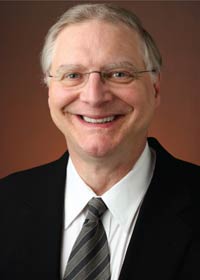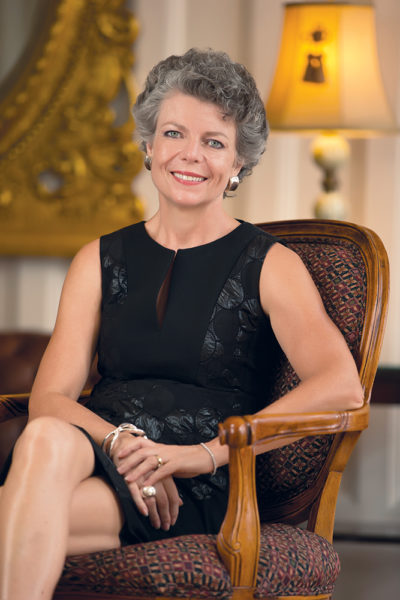Vanderbilt researchers David Lubinski and Camilla Benbow have for decades studied the life path of gifted children and how their abilities, measured at around age 12–13, affect their adult performance and contributions. The two now co-direct the Study of Mathematically Precocious Youth, which Benbow joined in 1976 and Lubinski in 1990. They moved the project from Iowa State University to Vanderbilt in 1998.
Since its inception in 1971, SMPY has tracked more than 5,000 students, among which is a special group of several hundred students who, before the age of 13, scored at least 700 on the math SAT or 630 on the verbal SAT—scores that only one in 10,000 children that age attain. Those students, now in their 50s and early 60s, have filed regular reports on their intellectual and professional development.
The results have uncovered interesting insights and data about how gifted children navigate life, and the study has received international attention. Most recently it was featured by The Wall Street Journal.
Benbow is Patricia and Rodes Hart Dean of Education and Human Development at Vanderbilt Peabody College of education and human development. Lubinski is Cornelius Vanderbilt Professor of Psychology at Peabody.
They reflect on the study in a Q&A as it marks its 50th year, and as new audiences are discovering its findings for the first time.
Q: You’ve studied the link between success and happiness for decades. What have you studied? What have you learned?
CB: Our overall research program is focused on the optimal development of exceptional intellectual talent over the lifespan. We started out studying educational interventions, because intellectually precocious kids are as far away from the norm as kids with developmental delays—or even more so. For example, IQs in the top 1 percent begin at approximately 137 but can go beyond 200. Typical educational curricula designed for their age-mates isn’t developmentally appropriate for students within this range.


DL: Our research program initially sought to uncover the best ways to meet their learning needs, predicated on appropriate developmental placement or tailoring the learning opportunities to the learning readiness of each student individually. As we have continued to study these individuals throughout their adult lives, our topics have moved beyond educational interventions to the world of work. Now we are studying creativity and eminence. What is it, for example, that distinguishes cutting-edge professionals from their peers who are doing fine but are not quite as distinguished? Along the way, we always examine how life choices relate to psychological well-being and what our participants require for developing a meaningful life.
CB: Individuals vary tremendously in their intellectual strengths and relative weaknesses across mathematical, spatial and verbal reasoning abilities. These patterns matter for identifying the best opportunities for learning and work environments within which to develop. It also is important to assess interests as well as passions for contrasting disciplines. This helps us understand the whole person and how different students prefer to develop. Understanding human individuality is the key to determining wise life choices as there are multiple paths and ways to develop a productive, satisfying and meaningful life and, thereby, to optimize human development.
Q: What inspired you to dig into this research when you joined this project decades ago?
CB: I was in a class at Johns Hopkins where the professor was Julian Stanley, who started SMPY and developed the talent search concept and the associated educational programs. (Julian got his start at Peabody College, by the way, where he was a professor [1949–53] after earning his doctorate.) This was a course on psychological testing, but he spent much time talking about his work with exceptionally gifted kids. I thought his stories were absolutely fascinating, so I changed career directions right then and there in my senior year. I wanted to understand those kids better: What made them tick? How do we best educate them? Who do they become? Will they make creative contributions and contribute to society? Do they lead lives where they feel fulfilled? What brought fulfillment and happiness? Are they the critical human capital that our conceptual economy requires? We have been busy addressing these questions for decades. And we can definitely say that these students did become the critical human capital that moves society forward. Their contributions are impressive and creative, and they are still contributing.
Q: Some might say it’s unusual for research to glean new insights over five decades. How have you managed to track the data for a project that has a more subjective end date?
DL: The interesting thing is that tracking participants has become much easier over time. Years ago, we invested hundreds of dollars monthly in tracking participants: calling their schools, parents and relatives as to their whereabouts. Now, with the internet, participants are relatively easy to find. Our participants tend to be highly visible on the web. In fact, because of search engines and tools like Google Patents and Google Scholar, we no longer need to include in our surveys a host of variables that we used to ask them about. We can now touch on things like what they require for a meaningful life and what are they most proud of.
Q: What sets your work apart in this field? What makes you proud about working on these important topics over this length of time?
CB: What is unique is that we are studying five cohorts of intellectually talented participants, identified at an early age. There are more than 5,000 of them. They have been assessed on abilities and educational/occupational interests and personality, and their educational histories are documented in detail—as are their home environments and families. We have three cohorts who were identified at ages 12–13 and followed up at ages 18, 23, 33 and 50. In addition, we have a cohort of 714 top STEM graduate students (half of whom are female) who have been followed up at ages 33 and 50. The breadth, depth and size of our study make it distinctive. And then there are the fascinating findings that have emerged, such as that there is no threshold effect of abilities on later accomplishments. So individual differences within the top 1 percent, which constitute more than one-third of the ability range, matter in life. While many other things also matter, more ability is better.
DL: The populations we are studying have the most potential to solve some of the pressing challenges of our time, including pandemics, cybersecurity or climate change. This is exciting work for us.
Q: What can people learn from what you’ve uncovered, and how can they apply it to their daily lives? Are there consistencies related to success that haven’t changed over time?
DL: We have been stunned by the predictive power of psychological assessments at age 12 and what they tell us about expected adult accomplishments and contributions.
CB: It is really important to be educationally responsive to people’s individuality. This individuality as assessed at age 12 can predict accomplishments and the area of the accomplishments at least 40 years later. But this kind of talent, once identified, needs to be cultivated to really flourish.
Q: What’s next for you in research? Will you continue to build on this body of work?
DL: Several psychological theorists have conceptualized the major life themes as getting ahead, getting along and finding meaning. Up to this point, we have devoted much time to the first of these themes (and we still are). Our participants did extremely well in getting ahead. However, we are moving to exploring getting along and finding meaning.
CB: Our recent surveys have shown how our participants also contribute to society through community engagement and volunteering activities and, then, how this contributes to their leading meaningful and personally rewarding lives. We are studying these and other life pursuits in addition to our documentation of their career contributions.
